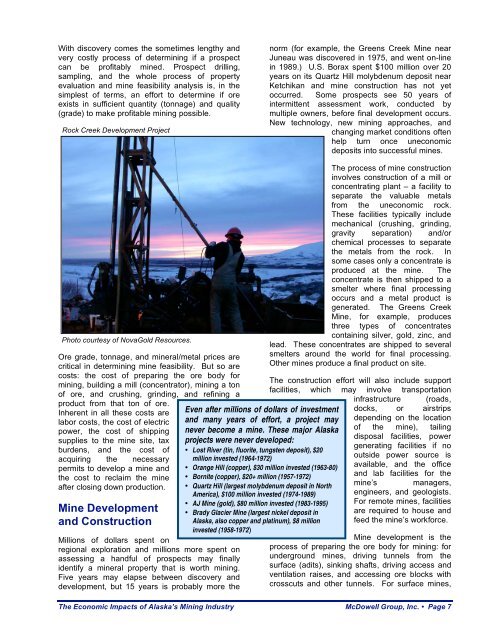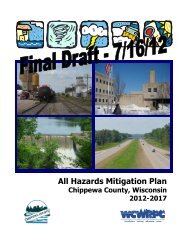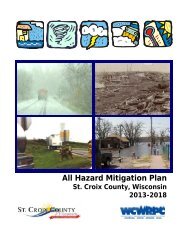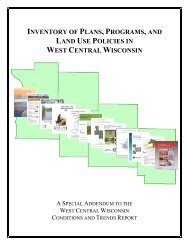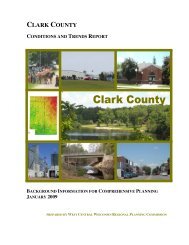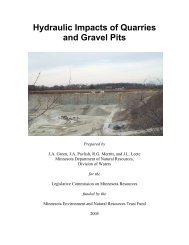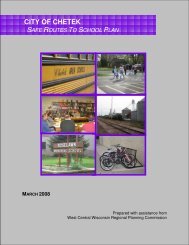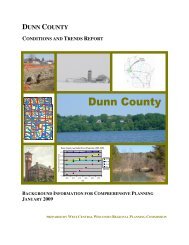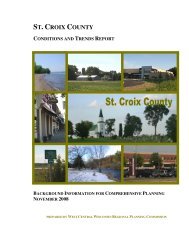The Economic Impacts of Alaska's Mining Industry - Alaska Miners ...
The Economic Impacts of Alaska's Mining Industry - Alaska Miners ...
The Economic Impacts of Alaska's Mining Industry - Alaska Miners ...
Create successful ePaper yourself
Turn your PDF publications into a flip-book with our unique Google optimized e-Paper software.
With discovery comes the sometimes lengthy and<br />
very costly process <strong>of</strong> determining if a prospect<br />
can be pr<strong>of</strong>itably mined. Prospect drilling,<br />
sampling, and the whole process <strong>of</strong> property<br />
evaluation and mine feasibility analysis is, in the<br />
simplest <strong>of</strong> terms, an effort to determine if ore<br />
exists in sufficient quantity (tonnage) and quality<br />
(grade) to make pr<strong>of</strong>itable mining possible.<br />
Rock Creek Development Project<br />
norm (for example, the Greens Creek Mine near<br />
Juneau was discovered in 1975, and went on-line<br />
in 1989.) U.S. Borax spent $100 million over 20<br />
years on its Quartz Hill molybdenum deposit near<br />
Ketchikan and mine construction has not yet<br />
occurred. Some prospects see 50 years <strong>of</strong><br />
intermittent assessment work, conducted by<br />
multiple owners, before final development occurs.<br />
New technology, new mining approaches, and<br />
changing market conditions <strong>of</strong>ten<br />
help turn once uneconomic<br />
deposits into successful mines.<br />
Photo courtesy <strong>of</strong> NovaGold Resources.<br />
Ore grade, tonnage, and mineral/metal prices are<br />
critical in determining mine feasibility. But so are<br />
costs: the cost <strong>of</strong> preparing the ore body for<br />
mining, building a mill (concentrator), mining a ton<br />
<strong>of</strong> ore, and crushing, grinding, and refining a<br />
product from that ton <strong>of</strong> ore.<br />
Inherent in all these costs are<br />
labor costs, the cost <strong>of</strong> electric<br />
power, the cost <strong>of</strong> shipping<br />
supplies to the mine site, tax<br />
burdens, and the cost <strong>of</strong><br />
acquiring the necessary<br />
permits to develop a mine and<br />
the cost to reclaim the mine<br />
after closing down production.<br />
Mine Development<br />
and Construction<br />
Millions <strong>of</strong> dollars spent on<br />
regional exploration and millions more spent on<br />
assessing a handful <strong>of</strong> prospects may finally<br />
identify a mineral property that is worth mining.<br />
Five years may elapse between discovery and<br />
development, but 15 years is probably more the<br />
Even after millions <strong>of</strong> dollars <strong>of</strong> investment<br />
and many years <strong>of</strong> effort, a project may<br />
never become a mine. <strong>The</strong>se major <strong>Alaska</strong><br />
projects were never developed:<br />
• Lost River (tin, fluorite, tungsten deposit), $20<br />
million invested (1964-1972)<br />
• Orange Hill (copper), $30 million invested (1963-80)<br />
• Bornite (copper), $20+ million (1957-1972)<br />
• Quartz Hill (largest molybdenum deposit in North<br />
America), $100 million invested (1974-1989)<br />
• AJ Mine (gold), $80 million invested (1983-1995)<br />
• Brady Glacier Mine (largest nickel deposit in<br />
<strong>Alaska</strong>, also copper and platinum), $8 million<br />
invested (1958-1972)<br />
<strong>The</strong> process <strong>of</strong> mine construction<br />
involves construction <strong>of</strong> a mill or<br />
concentrating plant – a facility to<br />
separate the valuable metals<br />
from the uneconomic rock.<br />
<strong>The</strong>se facilities typically include<br />
mechanical (crushing, grinding,<br />
gravity separation) and/or<br />
chemical processes to separate<br />
the metals from the rock. In<br />
some cases only a concentrate is<br />
produced at the mine. <strong>The</strong><br />
concentrate is then shipped to a<br />
smelter where final processing<br />
occurs and a metal product is<br />
generated. <strong>The</strong> Greens Creek<br />
Mine, for example, produces<br />
three types <strong>of</strong> concentrates<br />
containing silver, gold, zinc, and<br />
lead. <strong>The</strong>se concentrates are shipped to several<br />
smelters around the world for final processing.<br />
Other mines produce a final product on site.<br />
<strong>The</strong> construction effort will also include support<br />
facilities, which may involve transportation<br />
infrastructure (roads,<br />
docks, or airstrips<br />
depending on the location<br />
<strong>of</strong> the mine), tailing<br />
disposal facilities, power<br />
generating facilities if no<br />
outside power source is<br />
available, and the <strong>of</strong>fice<br />
and lab facilities for the<br />
mine’s managers,<br />
engineers, and geologists.<br />
For remote mines, facilities<br />
are required to house and<br />
feed the mine’s workforce.<br />
Mine development is the<br />
process <strong>of</strong> preparing the ore body for mining: for<br />
underground mines, driving tunnels from the<br />
surface (adits), sinking shafts, driving access and<br />
ventilation raises, and accessing ore blocks with<br />
crosscuts and other tunnels. For surface mines,<br />
<strong>The</strong> <strong>Economic</strong> <strong>Impacts</strong> <strong>of</strong> <strong>Alaska</strong>’s <strong>Mining</strong> <strong>Industry</strong> McDowell Group, Inc. • Page 7


